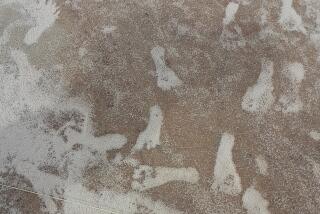Human migration from Asia to Americas not continuous
Human migration from Asia to the Americas occurred in three stages, with a 20,000-year layover on the frozen strip of land called Beringia in what is now the Bering Strait, researchers said this week.
Most scientists had believed that the migration occurred in one continuous passage, but archaeological and genetic evidence indicates otherwise, anthropologist Connie Mulligan of the University of Florida and her colleagues reported Wednesday in the online journal PLoS ONE.
Ancestors of current Native American populations migrated eastward out of Siberia about 40,000 years ago, according to studies of both mitochondrial DNA, which is passed down from mothers to children, and nuclear DNA, which contains genes from both parents.
But two major glaciers along their route trapped them in Beringia, researchers said. The climate would have been similar to that of Siberia or Mongolia, and the populations would have subsisted by fishing and hunting for mammoth, bison, caribou and other animals. “It wasn’t paradise, but they survived,” Mulligan said.
During the layover, many characteristic mutations developed in their DNA. When the climate warmed and the glaciers melted 15,000 years ago, they were able to continue their journey into the New World.
The genetic evidence indicates that 1,000 to 5,000 individuals were the ancestors of all Native Americans. Previous estimates were as low as 100 individuals.
As the climate continued to warm, sea levels rose, creating what is now the Bering Strait and submerging archaeological evidence of the humans’ passage.
“The idea that people were stuck in Beringia for a long time is obvious in retrospect, but it has never been promulgated,” said anthropologist Henry C. Harpending of the University of Utah, who was not involved in the study. “It’s very plausible.”
--




